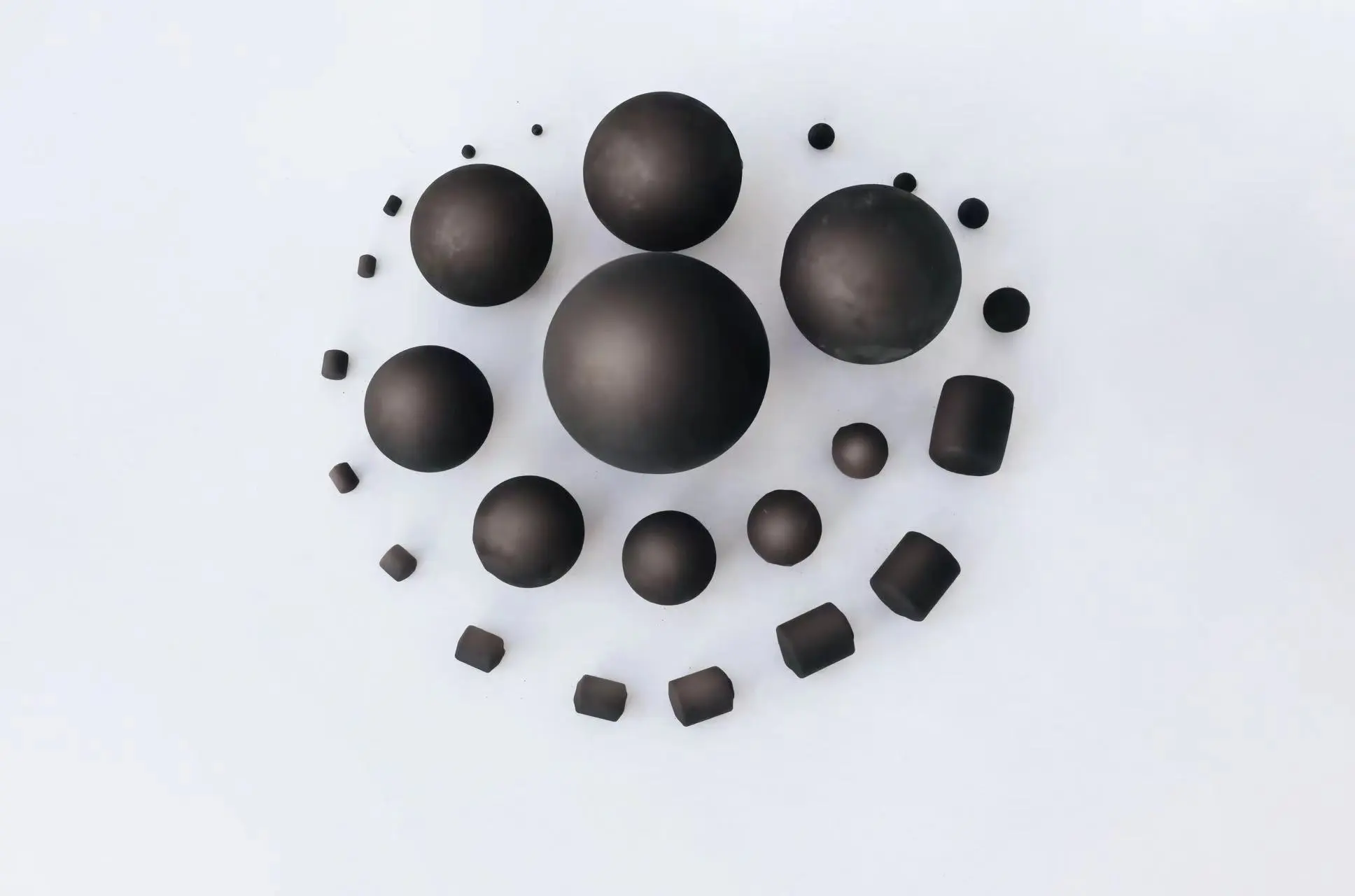Comparative Analysis of Ceramic and Steel Grinding Balls
Material Composition and Properties
Ceramic Grinding Balls for Ball Mill are typically made from high-purity alumina or zirconia, which gives them their exceptional hardness and wear resistance. These materials are known for their chemical inertness, making them ideal for applications where product contamination is a concern. The density of ceramic balls is generally lower than that of steel balls, which can affect the energy transfer during the grinding process. Steel grinding balls, on the other hand, are composed of various alloys, with high-chrome and low-chrome options being the most common. The composition of steel balls can be tailored to meet specific requirements, such as increased hardness or improved corrosion resistance. Steel balls have a higher density compared to ceramic balls, which contributes to their superior impact strength and ability to handle coarse grinding operations effectively.
Performance in Different Grinding Applications
Ceramic grinding balls excel in fine grinding applications, where their high wear resistance and ability to maintain a spherical shape contribute to consistent particle size distribution. They are particularly effective in wet grinding processes and can be used in various industries, including the production of electronic materials, ceramics, and specialty chemicals. Steel balls are well-suited for coarse grinding and high-energy milling operations. Their higher density and impact strength make them ideal for breaking down larger particles and handling harder materials. Steel grinding balls are commonly used in the mining industry, cement production, and other applications where robust grinding media is required.
How does the wear rate of ceramic grinding balls compare to steel balls?
Factors Influencing Wear Rate
The wear rate of grinding balls is a critical factor in determining their overall performance and longevity in ball mill operations. Several factors influence the wear rate of both ceramic and steel grinding balls:
- Material hardness and composition
- Operating conditions (e.g., mill speed, load, and temperature)
- Characteristics of the material being ground
- Presence of abrasive or corrosive elements
Ceramic grinding balls generally exhibit lower wear rates compared to steel balls, especially in fine grinding applications. The high hardness and wear resistance of ceramic materials contribute to their extended lifespan and consistent performance over time. However, it's important to note that the wear rate can vary depending on the specific ceramic composition and the operating conditions of the ball mill.
Long-term Cost Implications
While ceramic Grinding Balls for Ball Mill may have a higher initial cost compared to steel balls, their lower wear rate can lead to significant long-term cost savings. The extended lifespan of ceramic balls means fewer replacements are required, reducing downtime and maintenance expenses. Additionally, the consistent performance of ceramic balls can contribute to improved product quality and reduced contamination, which may further offset the initial investment. Steel grinding balls, despite their higher wear rate, can still be cost-effective in certain applications, particularly in coarse grinding operations where their impact strength is crucial. The choice between ceramic and steel balls should consider not only the wear rate but also factors such as grinding efficiency, energy consumption, and overall process requirements.
Optimizing Ball Mill Performance with the Right Grinding Media
Selecting the Appropriate Grinding Balls
Choosing the right grinding media for your ball mill is essential for optimizing performance and achieving desired results. Consider the following factors when selecting between ceramic and steel grinding balls:
- Material characteristics of the feed
- Desired particle size and distribution
- Mill operating conditions
- Contamination concerns
- Energy efficiency requirements
- Long-term cost considerations
In some cases, a combination of ceramic and steel grinding balls may provide the best solution, leveraging the strengths of both materials to optimize the grinding process. Consult with grinding media experts or conduct pilot tests to determine the most suitable option for your specific application.
Maintenance and Monitoring
Regardless of the type of Grinding Balls for Ball Mill chosen, proper maintenance and monitoring of your ball mill are crucial for ensuring optimal performance and longevity of the grinding media. Regular inspections, timely replacement of worn balls, and careful control of operating parameters can help maximize the efficiency of your milling process and extend the life of your grinding media. Implementing advanced monitoring systems, such as acoustic sensors or power draw measurements, can provide valuable insights into the condition of your grinding media and help optimize the ball mill's performance. By closely monitoring wear rates and grinding efficiency, you can make informed decisions about when to replace or supplement your grinding balls, ensuring consistent product quality and minimizing operational costs.
In conclusion, the choice between ceramic and steel grinding balls for ball mills depends on various factors specific to your application. While ceramic balls offer advantages in terms of wear resistance and fine grinding capabilities, steel balls excel in impact strength and coarse grinding operations. By carefully considering your process requirements and conducting thorough evaluations, you can select the most appropriate grinding media to optimize your ball mill's performance and achieve your desired outcomes. For expert advice on selecting the right grinding balls for your ball mill application, or to learn more about our high-quality grinding media options, please contact us at sales@da-yang.com or sunny@da-yang.com. Our team of specialists is ready to assist you in optimizing your grinding process and improving your operational efficiency.









